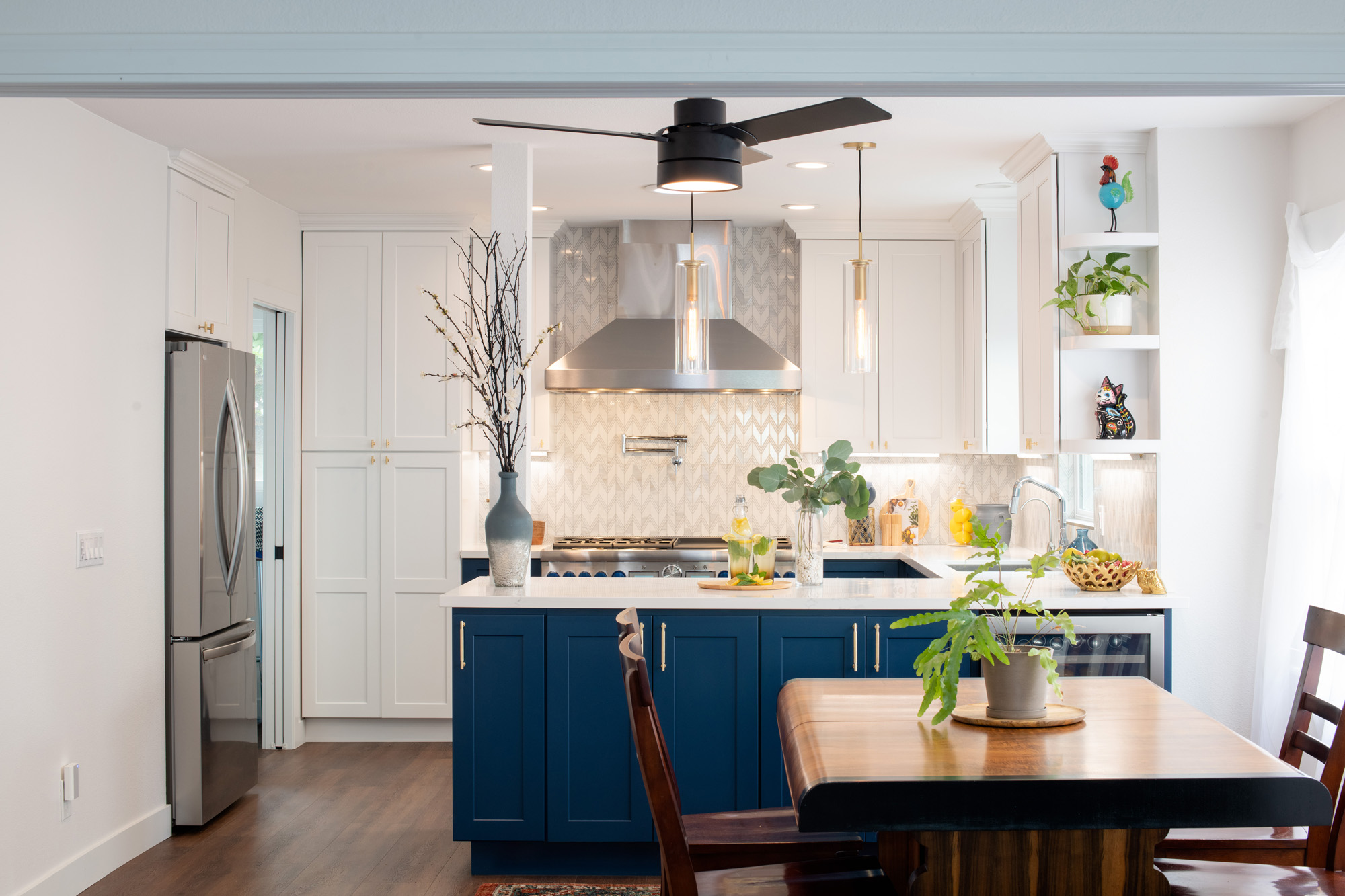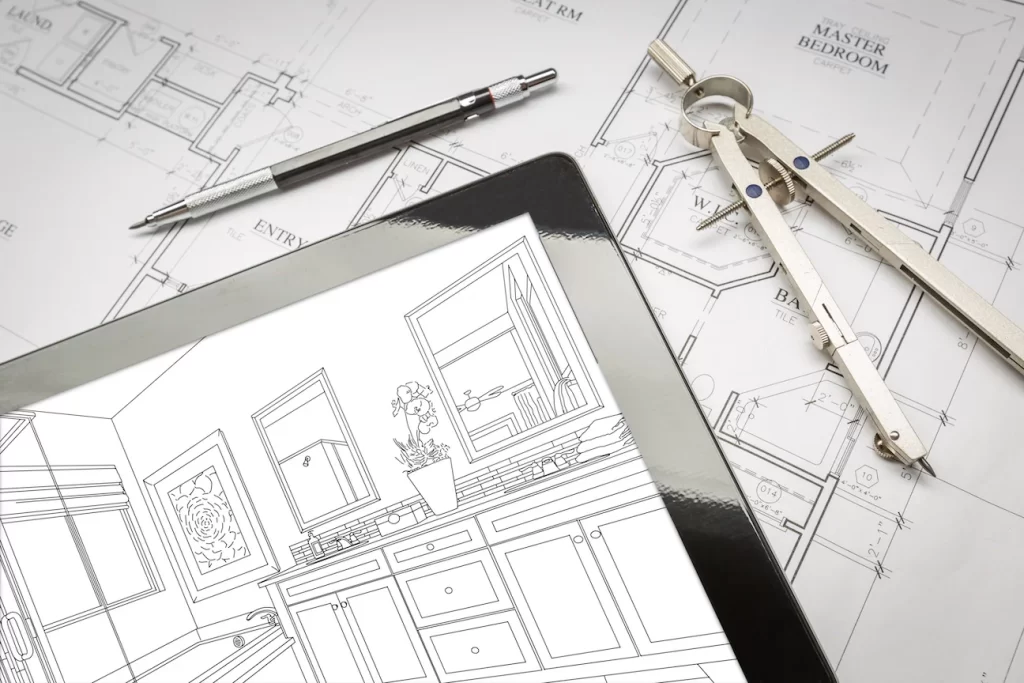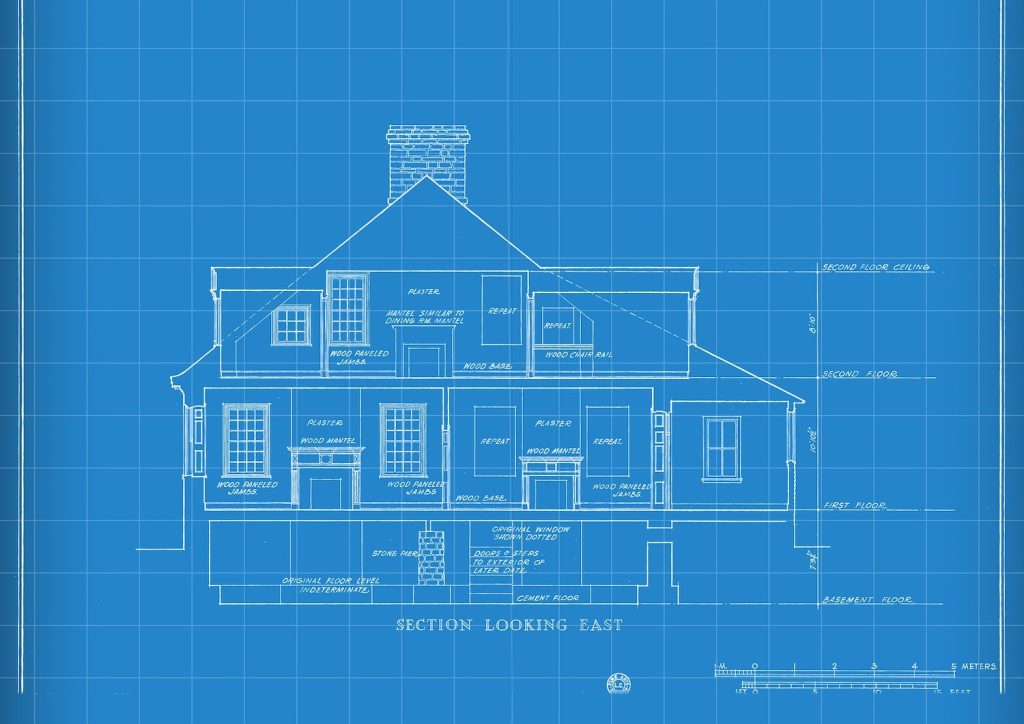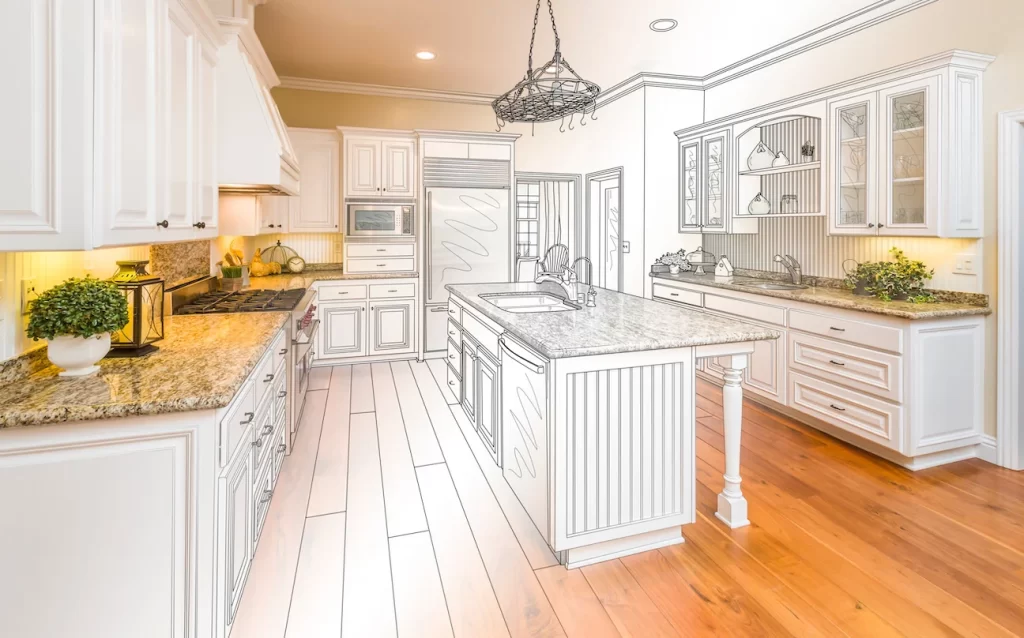
Embarking on a home renovation project can be both exciting and overwhelming. Whether you’re looking to make minor updates or transform your entire space, it’s essential to have a clear plan in place before you begin. By taking the time to identify the scope of your project, develop a design plan, and establish a budget, you will be well-prepared to tackle your renovation and create a space you love.
One essential first step when renovating a house is to determine your goals and the specific projects you plan on undertaking. That could range from a simple room update to a whole house remodel. Once you have identified the scope of your project, you can begin the planning and designing phase, where you’ll consider the layout, materials, and finishes that will bring your renovation vision to life.
Before starting a renovation project, it is crucial to identify the scope of work. That involves creating a clear list of all remodeling tasks that need to be accomplished, which helps lay a solid foundation for a successful home improvement project. In doing so, you can avoid potential pitfalls during the renovation process and better manage your time, resources, and budget.
To begin, evaluate your house’s current condition and identify areas that require remodeling or improvement. Make a list of possible renovation projects, focusing on both functional and aesthetic aspects. That may include electrical upgrades, plumbing repairs, or kitchen and bathroom remodeling. By having a comprehensive list, you will be better equipped to prioritize tasks based on your resources and desired outcomes.
Once you have your list of projects, learning about the remodeling process from start to finish is essential. Understanding the various stages of renovations will help you make informed decisions and ensure a smoother project flow. Additionally, familiarize yourself with any legal requirements or permits that may be necessary for your planned renovations, as this will help prevent any delays or potential issues down the line.
For DIY enthusiasts, be realistic about your skills and the time commitment needed for each task. Determine which projects you can handle independently and which may require professional assistance. Giving yourself a clear overview of the project will ensure you stay focused and organized throughout the renovation process.
A well-defined scope for your renovation project is essential for its success. You can optimize time, money, and effort to create your dream home by systematically outlining all necessary tasks while considering your skills.

When considering a renovation, you should first plan your design and choose a style that reflects your taste and needs. Start by gathering inspiration for your project from various sources such as magazines, websites, and social media. That will help you determine the aesthetics and design direction you would like to go with.
As you collect ideas, consider the overall style and essence you want to achieve in your renovation. That can include anything from modern kitchen inspirations to more specific elements like functional and stylish kitchen islands. Keep in mind the visual harmony between different spaces in your house, and try to create a cohesive look.
In your planning process, it’s essential to identify the key features and focal points that will define your space. For instance, in a kitchen renovation, decide on the layout, materials, and lighting that will best suit your needs. Use a kitchen-style guide to assist you in making informed choices.
While planning, be mindful of your budget and set realistic expectations for your renovation. It’s essential to prioritize your needs and allocate resources accordingly. Additionally, be open to adjusting your design as needed and always have a contingency plan.
Lastly, work with professionals like architects, interior designers, and contractors during the planning and designing stage. They’ll offer expert advice and help you bring your vision to life while ensuring your renovation is functional, aesthetic, and within your budget. Remember, a well-thought-out plan is the foundation of a successful and stress-free home renovation.

When starting a house renovation, the first thing you should do is create a well-planned budget. That will ensure you clearly understand the costs associated with the project. To start your renovation budget, you must first identify which projects are most important and prioritize them accordingly.
Carefully consider the expenses related to each project in your renovation plan. That involves estimating the cost of materials, labor, and any additional costs that may arise. Researching and comparing prices for similar projects is essential to setting a realistic budget.
As part of your budgeting process, create a list of must-haves alongside items you would like to include if your budget allows for it. That will help you determine which projects are necessary and which can be cut from the plan if needed. Sticking to your budget as much as possible is crucial to keep costs down.
As unexpected expenses may arise, a contingency fund is also crucial when budgeting for a house renovation. Allocate 10-20% of your initial budget for contingencies to help you manage unforeseen costs without facing extreme financial stress.
In some cases, you may also need to consider the cost of building a custom home to determine if renovation or building is the better investment for your unique scenario. Always seek professional advice and multiple quotes to make the best decision for your home and finances.
By carefully budgeting for your house renovation, you can avoid excessive spending and ensure the successful completion of your home improvement project.

When renovating a house, the first thing you need to do is choose the right contractor. Look for experienced contractors with a good reputation and a proven track record. Start by asking your friends and family for recommendations, or search online for reputable contractors in your area.
When considering a kitchen remodel contractor or a bathroom remodel contractor, make sure to check their previous work and read customer reviews. Additionally, verify that they have the necessary licenses and insurance.
After narrowing down your options, reach out to the contractors to schedule interviews. During this process, it’s essential to ask the right questions, such as their experience with similar projects, their approach to managing subcontractors, and their timeline for your project. You can also refer to this list of 5 questions to ask your remodeling firm for more guidance.
Obtain written estimates from the contractors you’ve interviewed and compare them carefully. Ensure each estimate includes the cost of materials, labor, and necessary permits. Don’t base your decision solely on the price—the cheapest option may not always provide the best quality work.
Once you’ve chosen a contractor, ensure you have a clear and detailed contract outlining the work’s scope, deadlines, payment terms, and any warranties. That will help avoid any disputes and potential delays during the renovation process. By taking these steps, you’ll be on your way to a successful home renovation with a trustworthy contractor.

Obtaining the necessary permits is crucial before starting any renovations on your house. Your local city or county issues these permits and ensures that your project complies with building codes, construction regulations, and zoning codes for safety reasons.
First, familiarize yourself with your area’s specific permit requirements to begin the process. Each city or county may have unique requirements, so it’s essential to research and understand them before proceeding. Once you’ve identified the permits needed, you should complete a permit application. Some cities even offer the convenience of applying online.
For smaller projects like building a fence, you might only need to provide a basic sketch of the work you plan to complete. However, more extensive renovations may require detailed building plans. If you’re hiring an architect, engineer, or licensed contractor for your project, they can assist you in obtaining the permits.
Keep in mind that permits are essential for ensuring your renovations are up to code and done safely. Failing to obtain the necessary permits could result in fines, delays, or even the need to remove unauthorized work. Being proactive about permits will ensure a smoother renovation process and give you peace of mind knowing that your project complies with local codes and regulations.
Remember, applying for and obtaining the proper permits is critical when renovating your house. Research your area’s specific requirements, complete the application, and work with experts to ensure you’re following all necessary rules and guidelines. That will lead to a successful and legally compliant renovation, allowing you to enjoy the new improvements to your home.

When starting a renovation, the first step is to assess the fundamentals of the house. Ensure the foundation, electrical systems, plumbing, flooring, and roofing are all in good condition before beginning any major projects.
That will avoid unnecessary costs and complications down the line.
Next, plan for demolition if needed. It is essential to carefully remove any unwanted walls, flooring, or fixtures before remodeling. Keep in mind that this step can be time-consuming and may require professional assistance.
Once the demolition phase is complete, the remodel begins. Prioritize projects based on their impact, so it’s essential to allocate your budget accordingly. For instance, if your renovation involves updating the kitchen, you might want to know how long a kitchen remodel takes to plan the rest of your projects accordingly.
During the remodeling, focus on the foundation, electrical work, and plumbing components. These elements are crucial to the overall functionality of your house. Hiring professionals for these tasks ensures they are done correctly and efficiently, avoiding potential future problems.
Painting is another aspect to consider when renovating your house. Choose colors that complement the overall design and consider the aesthetics that you want to achieve. Remember to adequately prepare surfaces before painting, as this will result in a smoother and more durable finish.
Lastly, make sure the roof is in good condition throughout the renovation. A damaged or leaking roof can cause a lot of problems and even be dangerous. It is essential to address any roofing issues as soon as they arise to prevent further damage to your home.
In conclusion, diligently plan and execute each step of the renovation process, focusing on the critical aspects of demolition, remodeling, foundation work, electrical systems, plumbing, painting, and the roof. With the proper planning and execution, your renovation project will go smoothly and result in a beautiful and functional home.

When renovating your home, flooring is one of the first aspects to consider. The choice between carpet, tiling, or other flooring materials should be based on your lifestyle and the specific needs of each room. For example, consider factors like comfort, durability, and maintenance.
Another critical area to focus on during a renovation is cabinetry. In some cases, refinishing your current cabinets can provide an updated look without needing replacement. Other times, replacing the kitchen cabinets altogether may be more beneficial. To make an informed decision, carefully weigh the costs, benefits, and overall impact on your home’s aesthetics.
In addition to flooring and cabinetry, the selection of countertops dramatically affects the look and functionality of your space. Several countertop materials are available, including granite, quartz, and laminate. Each material offers different cost, durability, and appearance advantages. Carefully assess the needs, preferences, and budget of your renovation project.
Working with interior designers can be beneficial throughout your renovation process. These professionals have knowledge, experience, and design skills that can significantly help transform your space. They can assist in making informed decisions on layout, materials, and other elements and ultimately save time and money by ensuring all choices align with your vision, budget, and function.
Lastly, proper lighting is crucial when renovating interiors. Consider recessed lighting as a modern and versatile option for many spaces. It provides a minimalist and discreet design, allowing other features and finishes in the room to shine. Keep in mind that proper planning and placement of lighting are essential for creating a comfortable and functional atmosphere.
By addressing flooring, cabinetry, countertops, and lighting, along with the help of interior designers, your renovation project will encompass all aspects necessary to craft the perfect space tailored to your preferences and requirements.

When starting a house renovation, the first thing to do is to conduct a thorough evaluation and inspection. By examining the existing conditions, you can determine the project’s scope and establish a solid foundation for your renovation plan.
Walk through the entire property, assessing the foundation, electrical systems, plumbing, flooring, and roofing. Identifying any obvious issues or potential concerns that may need attention during the renovation process is crucial. For a smooth project, collaborating with an experienced whole home remodeling contractor can significantly increase the chances of success.
While inspecting the property, take the time to understand the layout and functionality of each area. Consider how renovations may impact the overall flow and how improvements can enhance the living experience. Keep in mind the specific goals for the project, whether it be updating aesthetics, increasing practicality, or adding value for resale.
Once you comprehensively understand the existing conditions, it’s time to create initial estimates for the scope of work. That involves considering material costs, labor expenses, permitting fees, and any other relevant financial factors. Having accurate estimates early in the process allows you to adjust your plans or budget as needed and avoid surprises further down the line.
By diligently evaluating and inspecting your property at the outset of the renovation process, you establish a strong foundation for a successful home transformation. Tackle each stage with confidence, knowledge, and a clear vision to create a space that better suits your lifestyle and needs.
As you embark on your home renovation journey, beginning with a detailed plan to ensure maximum efficiency and return on investment is crucial. By keeping your goals in mind and prioritizing tasks, you can maximize the value of your home. Remember, investing time and resources into your home renovation can contribute significantly to the value of your property when the time comes to sell.
When planning your renovation, consider the potential for increased energy efficiency throughout the process. Upgrading insulation, installing energy-efficient windows, and choosing eco-friendly appliances are just a few ways to create a more sustainable and cost-effective living space.
As you progress in your renovation, remember to review your budget regularly and make adjustments as needed. That allows you to manage costs and create the best possible outcome for your project.
In summary, the key to a successful house renovation starts with a solid plan focused on efficiency, return on investment, and eventually selling the property at a higher value. By following these guidelines and maintaining a confident, knowledgeable, and clear approach, you can achieve your renovation goals and create the home of your dreams.
When planning a home renovation, it’s essential to follow a specific order of operations to ensure a smooth process:
To create a home renovation planner:
Prioritize areas of the house that need critical repairs or affect the home’s overall safety and functionality. These may include structural issues, outdated electrical systems, or plumbing problems. After addressing these primary concerns, focus on projects that will enhance your living space, such as kitchen or bathroom remodels or room additions to increase living space.
A successful renovation involves careful planning, budgeting, and execution of tasks. Begin with a comprehensive home inspection to identify necessary repairs and improvements. Then, prioritize projects, establish a realistic budget, and create a timeline. Get any needed permits and work with reliable contractors or professionals. Finally, monitor progress, inspect the completed work, and enjoy your newly renovated space.
To renovate on a tight budget:
Some effective home renovation tips include careful planning, setting a realistic budget with contingencies, prioritizing tasks, working with licensed professionals, getting applicable permits, and staying organized throughout the process. Regularly monitor progress, inspect completed work, and maintain open communication with your contractors to ensure your renovation project runs smoothly and meets your expectations.
At Kaminskiy Design and Remodeling, we understand the intricacies of home renovations and the importance of each step in the process. Whether you’re revamping a single room or undertaking a whole-house transformation, our team of experts is here to guide you through every phase. With years of experience and a passion for crafting dream homes, we are committed to bringing your vision to life. If you’re ready to embark on your home remodeling project, trust in Kaminskiy Design and Remodeling to deliver results that exceed your expectations. Ready to take the next step? Schedule your Free, no-obligation, In-home Design Consultation today!

Kimberly Villa is a recognized expert in the Home Design and Remodeling industry. Her passion for the industry is matched only by her love for sharing insights, new trends, and design ideas. Kimberly’s expertise and enthusiasm shine through in her contributions to the Kaminskiy Design and Remodeling website blog, where she regularly shares valuable information with readers.